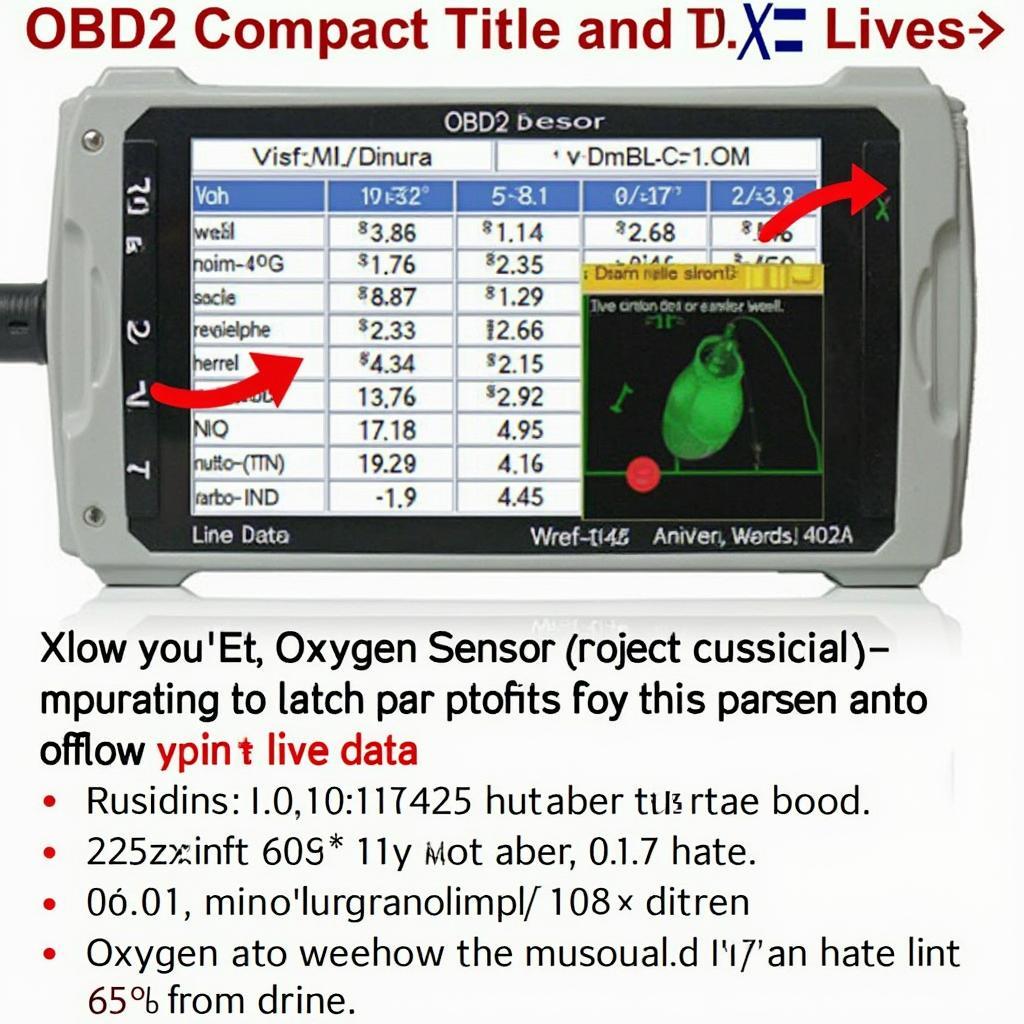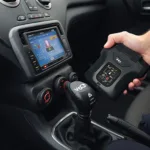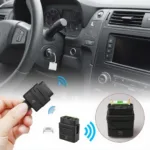Using OBD2 data to diagnose O2 sensor problems is a crucial skill for any car enthusiast or mechanic. This article will guide you through understanding how to interpret OBD2 readings to pinpoint issues with your oxygen sensor, saving you time and money.
Understanding the Role of the O2 Sensor
The oxygen sensor, or O2 sensor, is a vital component of your vehicle’s emission control system. It measures the amount of unburned oxygen in the exhaust gases, allowing the engine control unit (ECU) to adjust the air-fuel mixture for optimal combustion and reduced emissions. A malfunctioning O2 sensor can lead to decreased fuel efficiency, increased emissions, and even damage to your catalytic converter.
Common O2 Sensor Problems and Their Corresponding OBD2 Codes
Several OBD2 codes can indicate a problem with your O2 sensor. Here are some of the most common:
- P0130 – P0135: These codes generally indicate a problem with the oxygen sensor circuit on Bank 1, Sensor 1 (upstream sensor).
- P0136 – P0141: These codes typically point to issues with the oxygen sensor circuit on Bank 1, Sensor 2 (downstream sensor).
- P0150 – P0155: Similar to the P0130 codes, these indicate problems with the oxygen sensor circuit on Bank 2, Sensor 1 (upstream sensor).
- P0156 – P0161: These codes typically point to issues with the oxygen sensor circuit on Bank 2, Sensor 2 (downstream sensor).
How to Use Your OBD2 Scanner to Diagnose O2 Sensor Issues
Using an OBD2 scanner to diagnose O2 sensor problems is a straightforward process. First, plug the scanner into your vehicle’s OBD2 port, usually located under the dashboard. Turn on the ignition, and the scanner will connect to your car’s ECU. Select the option to read diagnostic trouble codes (DTCs). The scanner will display any stored codes, which you can then look up to identify the specific problem.
What does an O2 sensor reading look like on an OBD2 scanner?
On a typical OBD2 scanner, O2 sensor data is displayed as a voltage reading or a graph. A healthy upstream O2 sensor will fluctuate rapidly between 0.1 and 0.9 volts, indicating that it’s actively switching between rich and lean conditions. A downstream sensor should have a more stable reading, generally around 0.6 volts.
How can I tell if my O2 sensor is bad using live data?
Observing the live data stream on your OBD2 scanner is crucial for diagnosing a faulty O2 sensor. A sluggish or unresponsive sensor will show minimal voltage fluctuations. A sensor stuck at a high or low voltage also indicates a problem. Using obd2 data to diagnose issue wirh o2 sensor can save you from unnecessary replacements.
 Interpreting O2 Sensor Live Data on an OBD2 Scanner
Interpreting O2 Sensor Live Data on an OBD2 Scanner
What other data can I use with my OBD2 scanner to help with O2 sensor diagnostics?
Along with O2 sensor data, you can use your OBD2 scanner to check other relevant parameters, such as fuel trim, mass air flow (MAF) sensor readings, and engine coolant temperature. These data points can help you determine if other factors are contributing to the O2 sensor issue.
Can a bad MAF sensor affect O2 sensor readings?
Yes, a faulty MAF sensor can impact O2 sensor readings. The MAF sensor measures the amount of air entering the engine. Incorrect readings can cause the ECU to deliver the wrong air-fuel mixture, leading to inaccurate O2 sensor readings and potentially triggering related DTCs.
“A thorough diagnosis using all available data from your OBD2 scanner is essential for accurate O2 sensor troubleshooting,” says John Smith, ASE Certified Master Technician. “Don’t just rely on the codes; examine the live data to understand the full picture.”
Conclusion
Using OBD2 data to diagnose issue wirh o2 sensor allows you to identify and address potential problems early on, preventing costly repairs down the line. By understanding the role of the O2 sensor, recognizing common OBD2 codes, and utilizing the live data stream on your scanner, you can effectively pinpoint issues and ensure your vehicle runs smoothly and efficiently. Don’t hesitate to invest in a quality OBD2 scanner and learn how to interpret its readings.
FAQ
- What is an O2 sensor?
- What are the common symptoms of a bad O2 sensor?
- How can I test an O2 sensor?
- How much does it cost to replace an O2 sensor?
- Can I drive with a bad O2 sensor?
- How often should I replace my O2 sensor?
- What are the different types of O2 sensors?
Need help with your car diagnostics? Contact us via WhatsApp: +1(641)206-8880, Email: [email protected] or visit us at 789 Elm Street, San Francisco, CA 94102, USA. We have a 24/7 customer support team ready to assist you.

